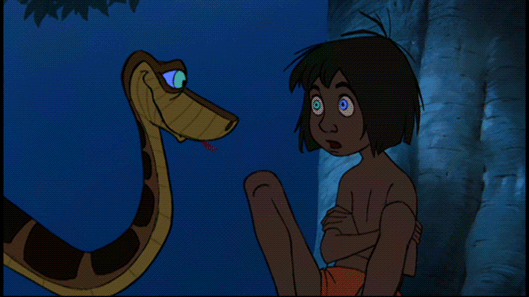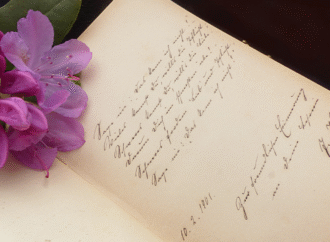The latest issue of National Geographic arrived at our house with a dazzling cover story on Yellowstone National Park, full of images of grizzly bears, wolves, elk, and bison. Yellowstone is a wild place “filled with wonders—fierce animals, deep canyons, scalding waters—that are magnificent to behold but fretful to engage,” and the issue asks whether humans can ever make peace with such wildness. As my sons thumbed through pages of glossy pictures of predators and prey, I sat nearby rereading a nearly 120-year-old copy of Rudyard Kipling’s The Jungle Book, which asks similar questions about man and nature, one of the most important of which is: What rules should we live by?
Kipling, of course, did what no NatGeo explorer can do: he put words into the mouths of animals in order to teach us about ourselves. Entering a Kipling book feels dark and mythical. A newspaper reviewer in 1895 correctly called Kipling’s Jungle Book stories “weird and wonderful” tales that fascinate, which is why it has been the subject of many movie adaptations, including the most recent one released by Walt Disney and now currently dominating the box office.
In his captivating tale of man-cub and beasts (originally published in 1894), Kipling delivers an account of a world both lethal and fascinating. In that world, we learn, there are packs we are born into and laws that have been devised to protect us; there are shifting alliances and adaptations that save us; there is danger but also care. Kipling’s fictional world is timeless, although for generations people have read The Jungle Book and comforted themselves by assuming (incorrectly) that their own times are far more civil, better educated, and more morally grounded.
Today, many people celebrate the demolition of old rituals and ideals, seeing in that destruction the promise of a more enlightened, rational future. And yet, it is the presence of sacred rules and traditions that offers one of the starkest contrasts between modern times and the one in which Kipling set his stories.
We still have rules, of course, and plenty of them, but they are often focused more on cultivating personal safety than strengthening moral traditions. One mother, writing about the movie version of The Jungle Book in The Washington Post, noted:
Like the animals of ‘The Jungle Book,’ we think the law of our jungle exists to keep our kids safe; moreover, we think if we follow the law, safety is the only possible outcome. That’s naive, of course, but it’s actually dangerous—it produces children who not only function best in a rules-laden society, but who are comfortable obeying supposedly unchangeable rules that are based on tradition rather than reason.
Kipling’s characters, in fact, mostly strive to live under the so-called Law of the Jungle, “which never orders anything without a reason.” The most sacred rule of the jungle is that animals never hunt and eat man, outside of rare approved circumstances. Under this guiding tenet, Kipling crafts a case study of behavior.
His animal “community” includes characters whose traits are familiarly human: a mother wolf prepared to fight to her death for a child who is not of her own body; Baloo the sleepy brown bear who has “no gift of words” but speaks the truth knowing that “learned wisdom” can protect the young; Bagheera the black panther who is a cunning, bold, and reckless creature who also knows how to listen to nature; Akela the pack leader who would save his wolf family shame by teaching them honor; Shere Khan, a Judas in the jungle, ready to betray anyone; and the gray apes who have no leader and no laws. Such types are as common among humans on the streets of any modern city as they are in Kipling’s nineteenth-century Indian jungle.
When Kipling places the gentlest of souls—a child—into this wild place, he introduces an implicit challenge to the Law of the Jungle. In trying to make sense of the jungle’s unspoken rules, the child, Mowgli, discovers his own creativity and natural curiosity—and naturally tests the rules. But he eventually realizes he needs the protection of those same sacred rules to survive.
And despite their anthropomorphized traits, the animals are still animals; Mowgli is different. When he prepares to leave the wolf pack for the first time to escape the marauding Shere Khan, Mowgli experiences a heartbreak that brings tears to his eyes, a human capacity unknown to his animal brothers. He struggles with his love for the mother who has raised and protected him and worries greatly that he will be forgotten by his parents. The Law of the Jungle demands many things of its inhabitants, (even that some, like Mowgli, leave the jungle) but it also provides a foundation for these bonds.
Kipling, who spent several years of his youth in an unhappy surrogate home separated from his parents, reading voraciously and learning how to write, uses the animals in his imaginary jungle to remind us—and perhaps himself—of the same important truth: that we are not alone in our struggle to live honorably and wisely, and among friends and family (whether by blood or by choice). But for those relationships to thrive they need the support of broader sacred laws and rituals; without them, life really is a dangerous jungle.
—
This blog post has been reproduced with the permission of Acculturated. The original blog post can be found here. The views expressed by the author and Acculturated are not necessarily endorsed by this organization and are simply provided as food for thought from Intellectual Takeout.
















Leave a Comment
Your email address will not be published. Required fields are marked with *